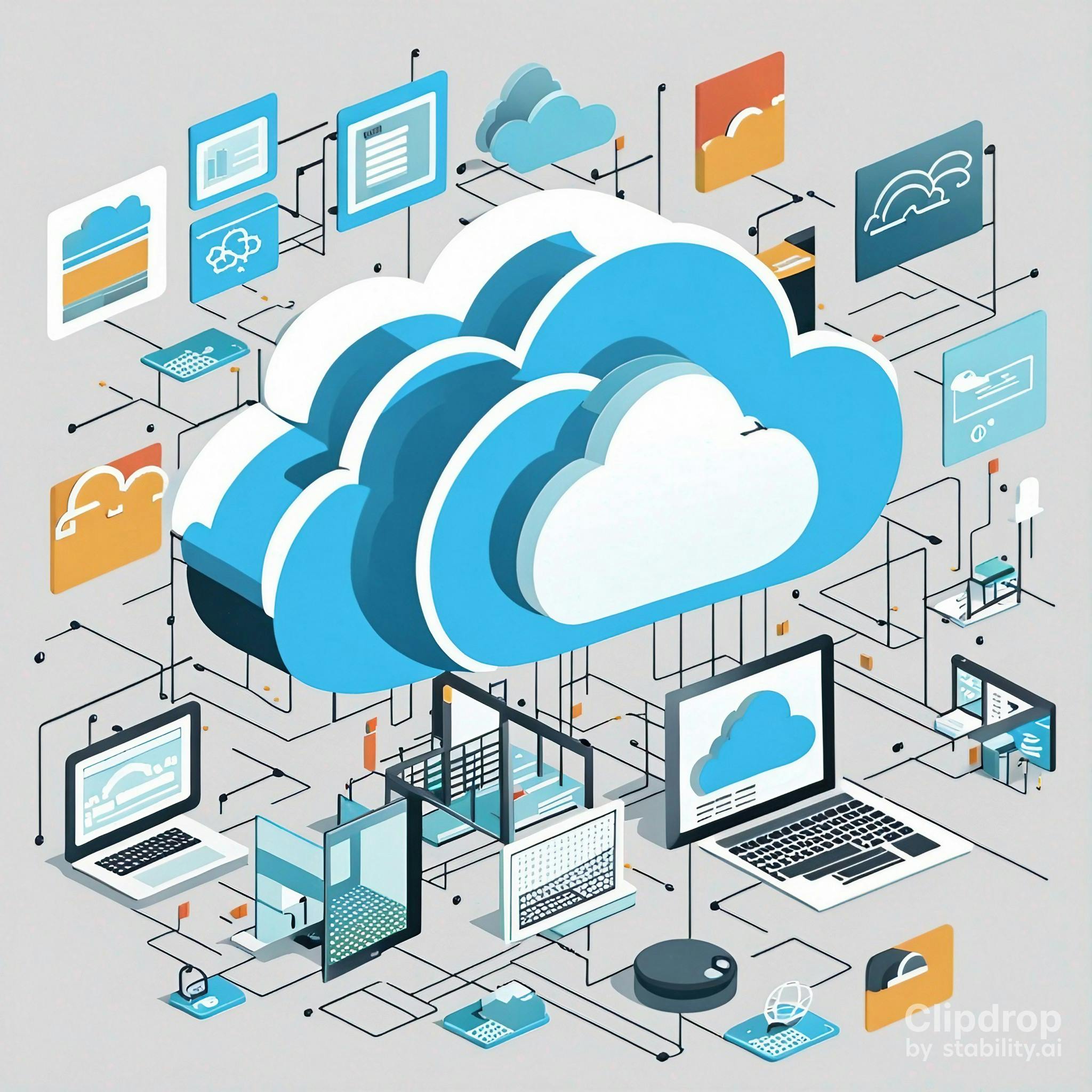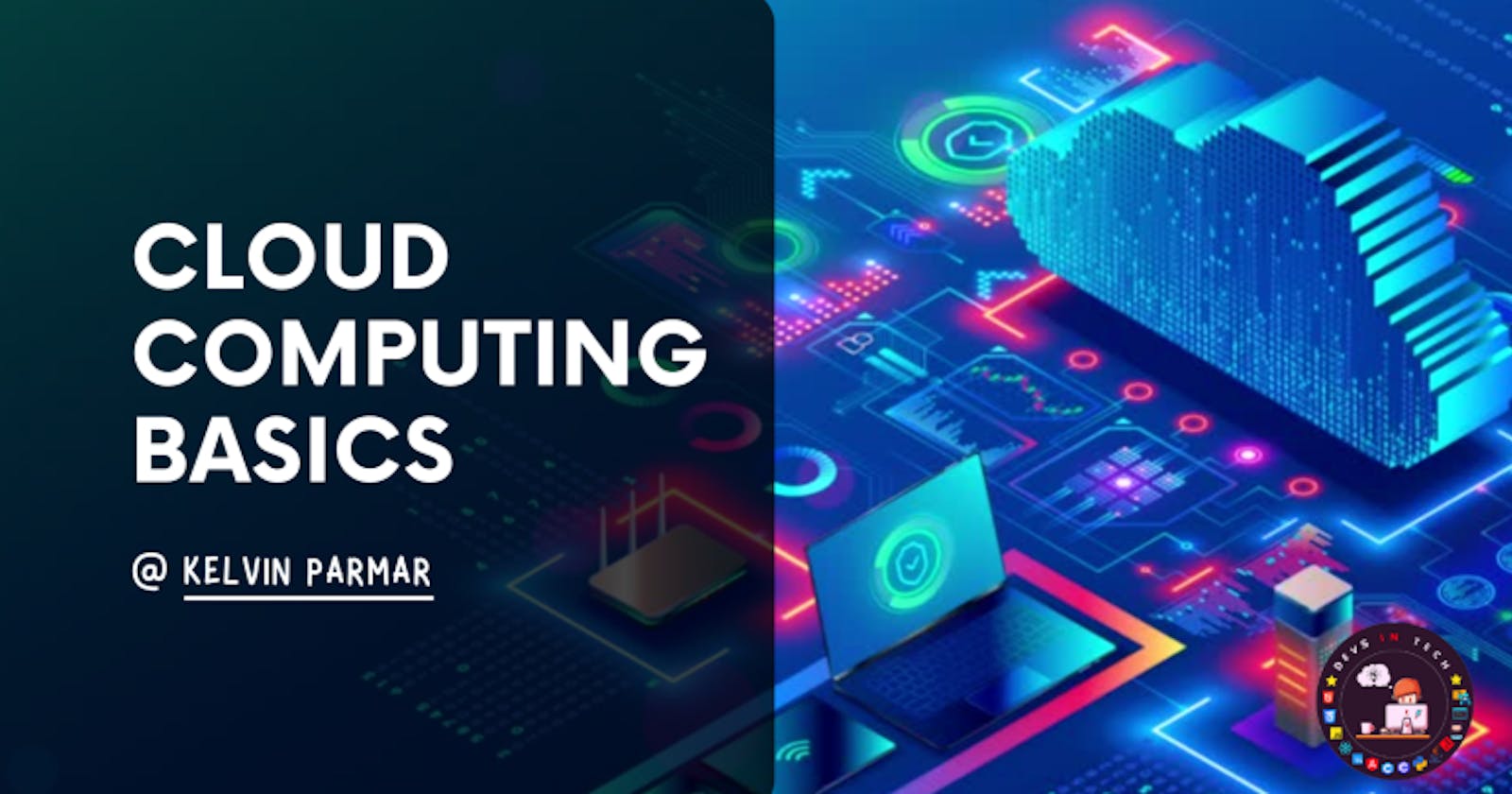Introduction
In this fast-paced digital era, businesses are continuously seeking ways to optimize their operations, enhance scalability, and boost efficiency. Among the many technological advancements that have revolutionized the modern business landscape, cloud computing stands out as a pivotal solution. The cloud has transformed how we store, process, and access data, providing numerous benefits to organizations of all sizes. I am Kelvin here and, In this Blog, we will deep dive into the world of cloud computing, explore its key components, and uncover the advantages it offers for businesses and individuals alike.
What is Cloud Computing?
To grasp the significance of cloud computing, let's start with the fundamentals. Cloud computing refers to the delivery of various computing services, including storage, servers, databases, software, analytics, and more, over the Internet. Unlike traditional computing methods that rely on physical servers and local networks, cloud computing enables users to access these services through the internet, from any location, at any time. It offers unparalleled flexibility and eliminates the need for maintaining on-premises hardware, saving businesses valuable resources.

The Key Components of Cloud Computing
1. Infrastructure as a Service (IaaS)
Infrastructure as a Service, or IaaS, forms the foundation of cloud computing. It provides virtualized computing resources over the Internet, giving businesses the flexibility to scale up or down according to their requirements. With IaaS, organizations can avoid the upfront costs of purchasing and managing physical servers, networking equipment, and data centers, making it an economical solution for both startups and established enterprises.
Infrastructure as Code (IaC) is a practice in software engineering that involves managing and provisioning computing infrastructure through machine-readable definition files rather than manually configuring physical hardware or using interactive configuration tools. In simple terms, it allows developers to treat infrastructure setup, configuration, and deployment as code, enabling version control, automation, and reproducibility.
The basic tools used to create infrastructure as code are:
Terraform: Terraform is an open-source infrastructure as a code tool developed by HashiCorp. It allows users to define and manage infrastructure in a declarative manner using a domain-specific language (HCL). With Terraform, you can create, modify, and version infrastructure resources across various cloud providers and on-premises environments.
Ansible: Ansible, another popular open-source automation tool, allows you to automate configuration management, application deployment, and infrastructure provisioning. It uses YAML-based playbooks to define the desired state of the infrastructure and execute tasks on remote servers.
Chef: Chef is a powerful configuration management tool that allows users to define infrastructure as code using a Ruby-based domain-specific language. It provides a framework for defining and maintaining the desired state of systems, automating repetitive tasks, and ensuring consistency across nodes.
Puppet: Puppet is a configuration management tool that provides a domain-specific language to describe infrastructure configurations. It enables the automation of provisioning, configuration, and management of servers, helping ensure consistent and scalable infrastructure.
AWS CloudFormation: AWS CloudFormation is a service provided by Amazon Web Services (AWS) that allows you to define and deploy infrastructure resources using JSON or YAML templates. It enables the provisioning of AWS resources and the configuration of related dependencies in a repeatable and automated manner.
Google Cloud Deployment Manager: Google Cloud Deployment Manager is similar to AWS CloudFormation but provided by Google Cloud Platform (GCP). It allows you to create and manage GCP resources using YAML or Python templates.
Azure Resource Manager: Microsoft's Azure Resource Manager is an IaC service for managing and deploying Azure resources using JSON or YAML templates. It helps simplify the process of managing complex infrastructure on Microsoft Azure.
These tools provide developers and DevOps teams with the ability to define infrastructure configurations as code, which brings consistency, version control, and automation to the infrastructure management process.
2. Platform as a Service (PaaS)
Platform as a Service, or PaaS, takes cloud computing a step further by offering a complete development and deployment environment to build, test, and manage applications. PaaS solutions streamline the app development process, allowing developers to focus on writing code rather than worrying about the underlying infrastructure. This leads to faster development cycles, increased collaboration, and ultimately, accelerated time-to-market for businesses.
Platform as a Service (PaaS) is a cloud computing model that provides a platform and environment for developers to build, deploy, and manage applications without the complexity of managing the underlying infrastructure. PaaS offers a comprehensive set of tools and services that streamline the app development process, allowing developers to focus on coding and innovation rather than worrying about hardware and software setup.
Some of the basic tools commonly used to create the infrastructure in a PaaS environment include:
Operating System: The underlying operating system that runs on the cloud servers and manages hardware resources.
Web Server: Software that handles HTTP requests and responses, serving web pages and applications to users.
Database Management System (DBMS): A software system for storing, managing, and retrieving data in databases.
Development Frameworks: Pre-built libraries, templates, and tools that provide a foundation for developers to build applications.
Runtime Environment: The environment required to run applications, including the necessary libraries and dependencies.
Middleware: Software that connects different software components and facilitates communication between them.
Development Tools: Integrated Development Environments (IDEs) and other tools that aid in coding, debugging, and testing applications.
Version Control Systems: Tools that help manage changes to code and track different versions of the application.
Automated Deployment Tools: Software that automates the process of deploying applications to the cloud environment.
Scalability and Load Balancing Tools: Tools that ensure applications can handle varying levels of traffic and distribute it efficiently across multiple servers.
These tools, provided by the PaaS provider, enable developers to focus on writing application code and building features, while the platform takes care of managing and maintaining the infrastructure. This streamlines the development process, reduces time-to-market, and allows businesses to innovate more effectively in the digital landscape.
3. Software as a Service (SaaS)
Software as a Service, or SaaS, delivers applications directly over the internet, eliminating the need for users to install, update, and maintain software on their devices. This cloud computing model has revolutionized the way we use software, with popular SaaS examples like Google Workspace and Microsoft 365. SaaS solutions offer cost-effectiveness, automatic updates, and seamless accessibility across various devices, making them incredibly convenient for businesses and individuals.
Software as a Service (SaaS) is a cloud computing model in which software applications are provided to users over the Internet. In this model, the software is hosted and maintained by a third-party service provider, and users can access it through a web browser or application interface without needing to install or manage the software on their local devices.
Basic tools used to create infrastructure for SaaS applications include:
Cloud Computing Platforms: Cloud service providers like Amazon Web Services (AWS), Microsoft Azure, and Google Cloud Platform offer a range of services and tools to build and deploy SaaS applications. They provide virtualized resources, storage, and networking capabilities needed to host and run the software.
Containers: Containerization platforms like Docker enable developers to package the application code along with its dependencies and configurations into isolated containers. This allows for consistent and efficient deployment across different environments.
Microservices Architecture: SaaS applications are often built using a microservices architecture, where the application is divided into smaller, independent services that can be developed, deployed, and scaled independently. This approach enhances flexibility and scalability.
Load Balancers: Load balancers distribute incoming network traffic across multiple servers or instances to ensure efficient utilization of resources and improved application performance.
Database Management Systems: SaaS applications require databases to store and manage user data and application information. Popular databases like MySQL, PostgreSQL, or NoSQL databases like MongoDB are commonly used in SaaS development.
Identity and Access Management (IAM): IAM tools provide authentication and authorization services, ensuring that only authorized users can access specific features and data within the SaaS application.
Monitoring and Logging Tools: Monitoring tools such as Prometheus, Grafana, or ELK (Elasticsearch, Logstash, Kibana) stack are used to monitor the application's performance, detect issues, and analyze logs for debugging and optimization.
Continuous Integration/Continuous Deployment (CI/CD) Tools: CI/CD tools like Jenkins, GitLab CI/CD, or CircleCI automate the process of building, testing, and deploying updates to the SaaS application, facilitating a smooth development workflow.
API Gateway: API gateways manage and expose APIs, enabling seamless communication between different components of the SaaS application and facilitating integrations with external systems.
Security and Encryption Tools: Various security tools are employed to secure the SaaS application and protect user data. SSL certificates, firewalls, and encryption mechanisms are some examples.
By leveraging these tools and technologies, developers can create a robust and scalable infrastructure for Software as a Service application, delivering efficient and seamless services to users over the internet.
The Advantages of Cloud Computing
1. Enhanced Flexibility and Scalability
Cloud computing offers unparalleled flexibility, allowing businesses to scale their resources up or down as needed. Whether it's handling seasonal spikes or accommodating business growth, the cloud can seamlessly adjust to fluctuating demands, ensuring optimal performance and cost efficiency.
2. Cost Savings
By adopting cloud computing, organizations can significantly reduce their capital expenditure on hardware, software, and data center maintenance. The pay-as-you-go pricing model of cloud services enables businesses to pay only for the resources they consume, eliminating unnecessary costs.
3. Improved Collaboration and Accessibility
With cloud-based applications and data storage, teams can collaborate more effectively, regardless of their physical location. Cloud computing enables real-time access to data and applications, promoting collaboration, and boosting productivity.
4. Enhanced Security and Reliability
Leading cloud service providers invest heavily in security measures to protect their clients' data. These providers employ encryption, authentication, and other robust security protocols, ensuring that data is safeguarded from unauthorized access and potential threats. Additionally, cloud services often have built-in redundancy and backup mechanisms, enhancing data reliability and availability.
5. Automatic Updates and Maintenance
Cloud service providers handle software updates and maintenance tasks, freeing businesses from the burden of managing these processes. This ensures that applications and services are up-to-date and functioning optimally at all times.
Conclusion
Cloud computing has undoubtedly emerged as a game-changer in the world of technology. Its ability to provide scalable, cost-effective, and efficient solutions has reshaped the way businesses operate. From startups to multinational corporations, cloud computing has opened up new possibilities for growth and innovation. Embracing the cloud empowers businesses to stay competitive, agile, and future-ready in a dynamic and ever-evolving digital landscape. As technology continues to advance, cloud computing will remain at the forefront of digital transformation, driving success for businesses and unlocking the potential of the future.
And it's a wrap-up 🙂. I hope you have learned something from this blog. If it's helpful to you then do like ❤, follow🤝 me on Hashnode, Twitter, and GitHub subscribe to my Hashnode newsletter so that you don't miss any future posts. Thanks for reading and have a great day!
